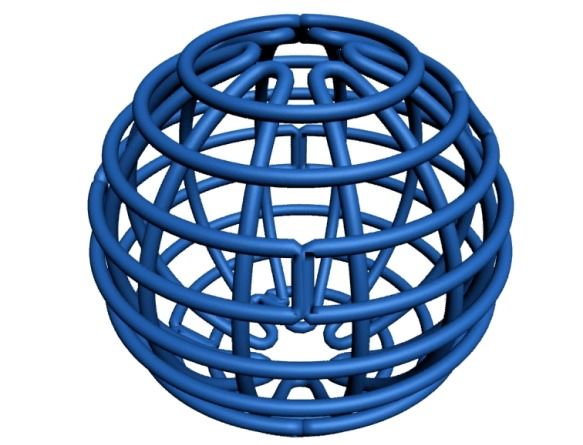
Scientists have bent DNA into bizarre, basket-woven shapes, from spheres to corkscrews.
The new DNA origami, described today (March 21) in the journal Science, is one of the first steps in designing tiny nano-robots that could carry medicines or repair cells in the body.
"These are just the basic elements for device construction," study co-author Dongran Han, a chemistry doctoral candidate at Arizona State University, told LiveScience. "For future applications, we need a much bigger toolbox."
Mini-machines
In the past, scientists have used DNA to write out words, made spaceships from tiny DNA bricks and even stored all of Shakespeare's sonnets in the genetic code. Many of these methods are essentially proofs-of-concept to demonstrate that DNA (deoxyribonucleic acid) can be used to make microscopic machines for the body.
The new technique relies on DNA's unique ability to self-assemble. The molecule is usually bound into a double helix made of two strands with complementary base pairs, or letters representing nucleotides: A's bind to T's, and G's bind to C's. By manipulating the DNA sequence, the team can create single strands of DNA that will bind to each other in specific ways, forming unique shapes.
DNA's base pairs "recognize each other automatically," Han said. "If you design the things right, they will grow into the right things."
Sign up for the Live Science daily newsletter now
Get the world’s most fascinating discoveries delivered straight to your inbox.
From single strands of DNA, Han and his colleagues created a wireframe structure that could then fold into several other shapes, such as corkscrews, spheres and scissors.
The DNA-folding methods could one day help engineers create self-assembling robots that work inside the body, tiny chemical factories or molecular electronics.
But before that can become a reality, researchers need to develop standard ways of building any shape they can conceive of, Han said.
Follow Tia Ghose on Twitter@tiaghose. Follow LiveScience @livescience, Facebook & Google+. Original article on LiveScience.com.

Tia is the managing editor and was previously a senior writer for Live Science. Her work has appeared in Scientific American, Wired.com and other outlets. She holds a master's degree in bioengineering from the University of Washington, a graduate certificate in science writing from UC Santa Cruz and a bachelor's degree in mechanical engineering from the University of Texas at Austin. Tia was part of a team at the Milwaukee Journal Sentinel that published the Empty Cradles series on preterm births, which won multiple awards, including the 2012 Casey Medal for Meritorious Journalism.











